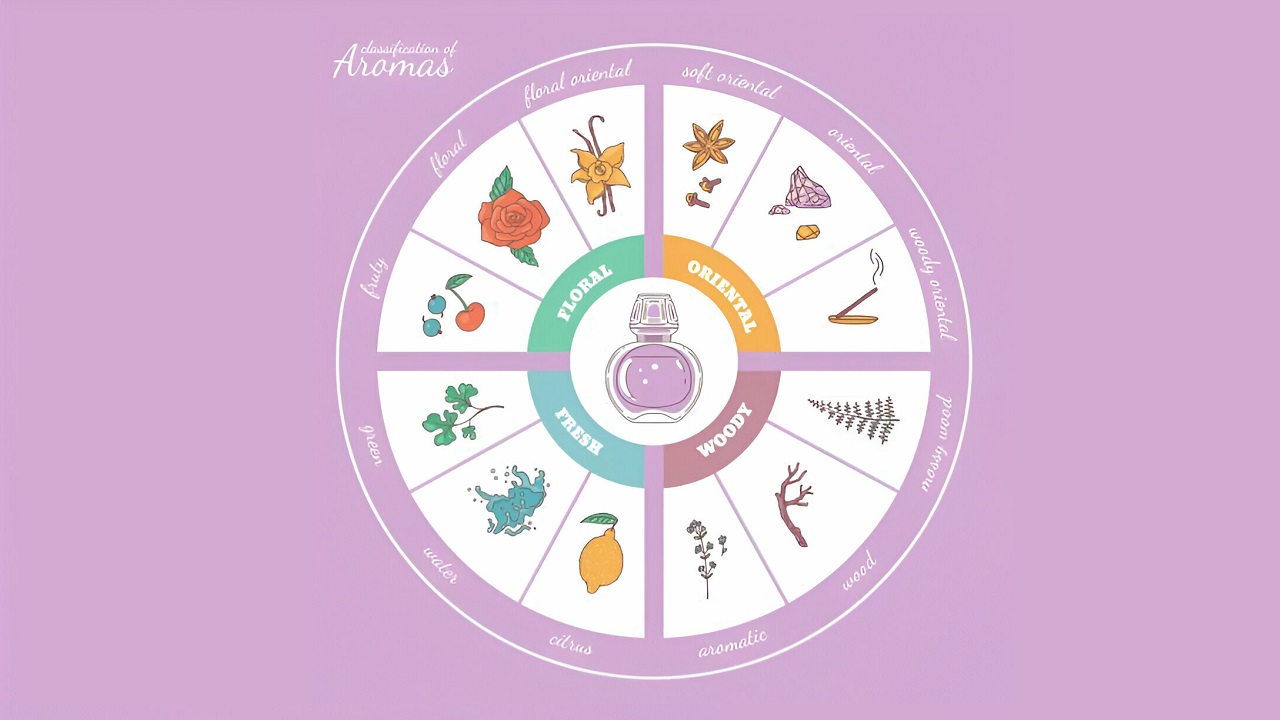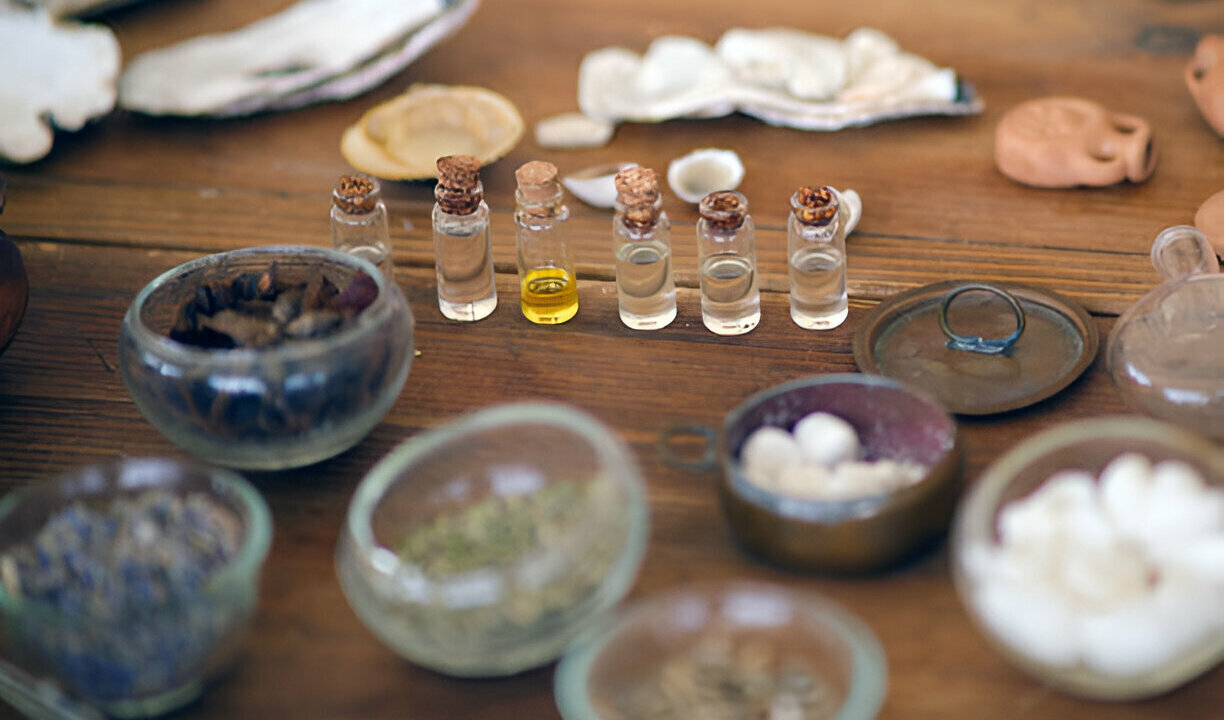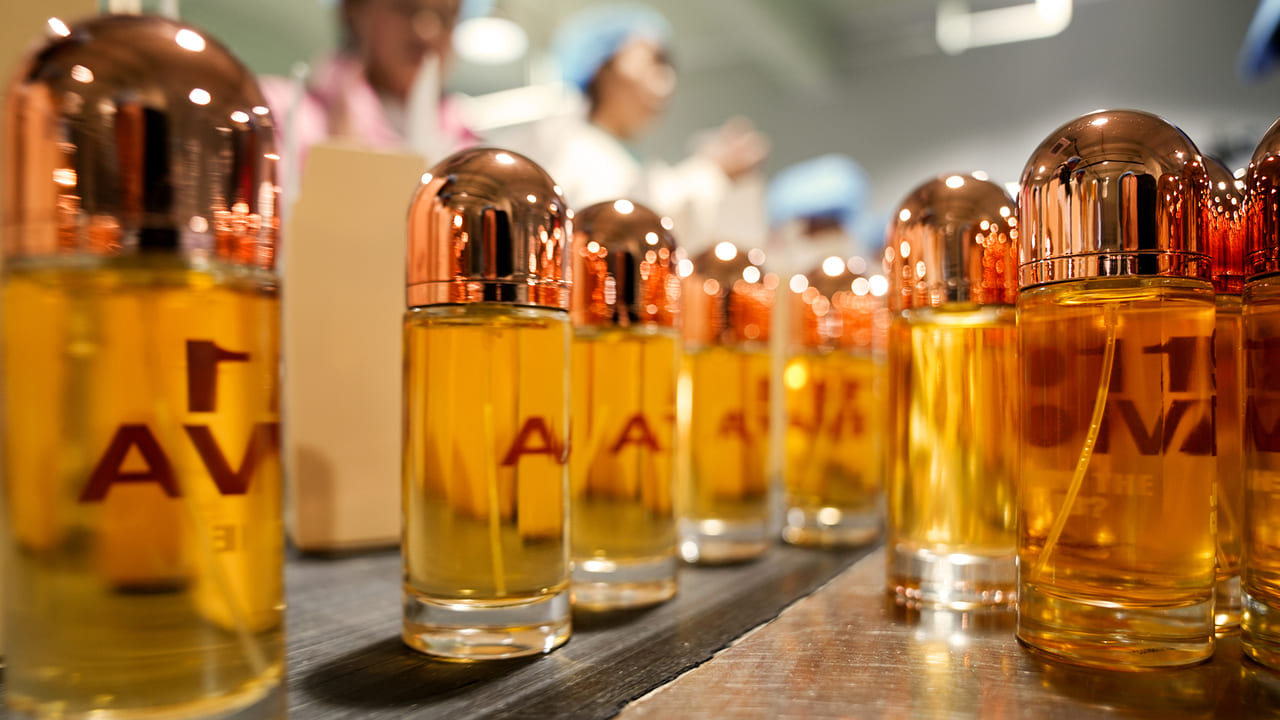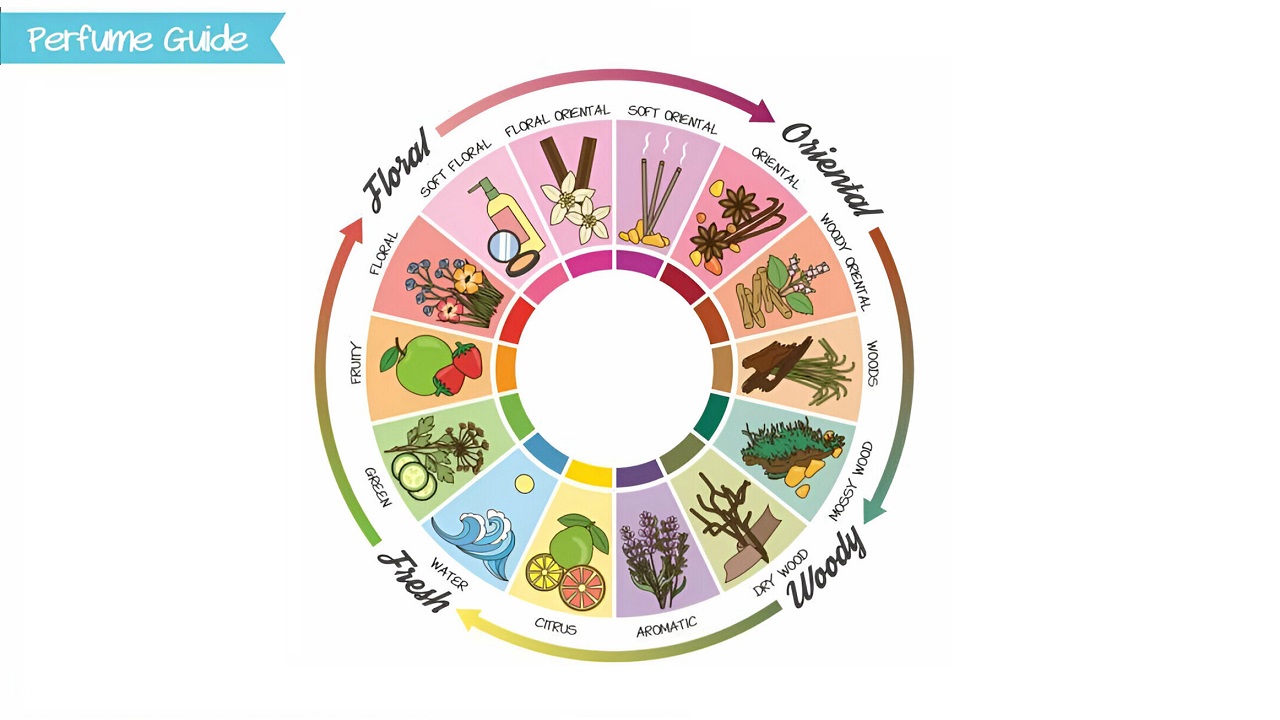Table des matières
BasculerCreating successful fragrance products requires artistry and precision, and understanding the fragrance wheel (also called the scent wheel) is vital to achieving this balance. Whether you’re developing perfume lines, scented candles, or aromatherapy diffusers, mastering fragrance categories and their relationships helps you create harmonious scent combinations that resonate deeply with consumers.
In this guide, we’ll introduce the fragrance wheel, explore its fascinating historical background, and share practical tips for utilizing it effectively in your fragrance business.
What Is The Fragrance Wheel?
Think of the fragrance wheel as the perfumer’s equivalent of an artist’s color wheel. It’s a visual tool designed to categorize scents systematically based on their similarities, contrasts, and complementary relationships.
Today’s fragrance wheel typically divides fragrances into four main fragrance categories:
- Floral
- Amber (Formerly Oriental)
- Boisé
- Frais
Each fragrance category contains distinct sub-categories, defined by their unique perfume ingredients and scent profiles.

A Brief History: How The Fragrance Wheel Evolved
The idea behind categorizing scents visually isn’t new. As early as 1949, Austrian perfumer Paul Jellinek created the first known fragrance classification tool, called the “Odor Effects Diagram,” detailed in his influential book, The Practice of Modern Perfumery. His groundbreaking work laid the foundations for future fragrance classification systems.
In the decades that followed, notable fragrance experts continued refining the concept. U. Harder introduced “The Fragrant Circle” at Haarmann & Reimer in 1979, and in 1984, sensory chemist Ann C. Noble developed “The Wine Aroma Wheel,” significantly influencing fragrance classification.
However, the fragrance wheel most widely recognized today was created in 1992 by fragrance authority Michael Edwards, author of the acclaimed reference, Fragrances of the World. Edwards’ wheel became an essential resource for perfumers and fragrance manufacturers worldwide.
Exploring The Four Fragrance Categories
Let’s dive deeper into each fragrance category, helping you understand their characteristics, appeal, and potential uses in your product lines.
1. Floral Fragrances: Classic Elegance
Floral fragrances evoke the beauty of blooming gardens and are among the most universally admired scents. Ingredients like rose, jasmine, lily, violet, and gardenia dominate this category, often associated with femininity, elegance, and romance. Due to their broad appeal, floral fragrances are popular in perfumes and luxurious scented products.
Common floral sub-categories include:
- Floral Fresh: Floral notes blended with subtle woody or spicy tones.
- Soft Floral: Characterized by powdery, aldehydic nuances.
- Floral Ambery: Warm florals infused with sweet and spicy notes.
2. Amber Fragrances: Rich and Exotic
Formerly known as Oriental fragrances, Amber fragrances radiate warmth, sensuality, and luxury. They often include decadent notes such as vanilla, cinnamon, cardamom, resin, and exotic spices. Amber scents lend themselves beautifully to upscale perfumes and sophisticated aromatherapy products.
Amber sub-categories:
- Ambery: Rich vanilla and exotic spices.
- Soft Ambery: Floral notes blended with delicate spices.
- Woody Ambery: Earthy blends featuring sandalwood or patchouli.
3. Woody Fragrances: Warm and Grounding
Woody fragrances offer natural, earthy aromas derived from ingredients like sandalwood, cedar, patchouli, and vetiver. They appeal widely due to their depth, grounding qualities, and versatility.
Woody sub-categories include:
- Woody: Classic sandalwood or patchouli notes.
- Mossy Woods: Smooth, mellow, and earthy scents.
- Dry Woods: Smoky, leathery, and aromatic woods.
- Aromatic: Woody notes blended with fresh herbs like lavender.
Woody fragrances are particularly appealing in men’s fragrance lines, gender-neutral perfumes, and home scents, providing a refined yet natural feel.
4. Fresh Fragrances: Clean and Invigorating
Fresh fragrances are vibrant, clean, and uplifting. They typically include citrus, marine, herbal, green, or fruity notes, creating a refreshing and energizing atmosphere.
Fresh fragrance sub-categories:
- Aromatic (Fougère): Herbs, lavender, and fresh woods.
- Citrus: Bright, uplifting citrus fruits (bergamot, grapefruit).
- Eau: Marine-inspired, oceanic scents.
- Green: Freshly cut grass, leaves, and herbal notes.
- Fruity: Sweet, juicy fruits positioned between fresh and floral categories.
Due to their refreshing character, fresh scents are popular in everyday perfumes, wellness products, and home fragrances like candles and diffusers.
The Psychology of Fragrance: Why Consumers Prefer Certain Scents
Understanding fragrance categories is important, but understanding consumer psychology is equally crucial. Scents strongly influence emotions, memory, and consumer behavior. For example:
- Floral scents evoke feelings of comfort, nostalgia, and romance.
- Amber scents communicate luxury, warmth, and sensuality.
- Woody scents provide grounding reassurance and calm.
- Fresh scents evoke cleanliness, vitality, and optimism.
Leveraging consumer psychology helps you create fragrance products that resonate deeply and inspire brand loyalty.

Current Market Trends in Fragrance Products
To succeed in today’s competitive market, businesses must stay informed of emerging trends. As the global fragrance market continues to grow—projected to reach US$62.11 billion by 2025 with steady annual growth—businesses must respond effectively to evolving consumer preferences. With a significant shift toward affordability and accessibility, the majority of fragrance sales are anticipated to come from non-luxury segments.
- Sustainability & Eco-friendly: Consumers increasingly demand sustainable perfume ingredients, recyclable packaging, and environmentally responsible brands.
- Personalized Fragrance Experiences: Customized fragrances and DIY blending kits are rapidly growing in popularity.
- Wellness & Aromatherapy: Products like reed diffusers, crystal diffusers, and scented candles positioned for relaxation and stress relief are experiencing significant growth.
- Gender-neutral Fragrances: Modern consumers prefer fragrances less restricted by traditional masculinity or femininity, opening opportunities across fragrance categories.
Practical Tips: Using the Fragrance Wheel in Product Development
Now that you understand fragrance categories, here are practical, actionable ways to use the fragrance wheel as a powerful tool in your scent development process:
- Blend Neighboring Scents: Fragrances positioned near each other naturally complement, creating harmonious, balanced aromas.
- Pair Opposite Scents: Scents from opposite sides of the wheel create intriguing, memorable contrasts ideal for distinctive fragrance lines.
- Try Triangular Combinations: Selecting three fragrances forming a triangle on the wheel delivers dynamic, balanced, and complex scents perfect for sophisticated perfumes and aromatherapy products.

Source of Beauty Fragrance: Your Expert Partner in Wholesale Fragrance Products
At Source of Beauty, fragrance is more than our business—it’s our passion. As an experienced B2B fragrance manufacturer, we craft superior-quality fragrance products tailored specifically to your brand’s vision and market demands.
We carefully select premium-quality perfume ingredients and expertly blend them to create distinctive scents across our diverse wholesale product lines:
- Wholesale Perfumes
- Bougies parfumées en gros
- Diffuseurs de roseaux en gros
- Wholesale Crystal Diffusers
- Wholesale Car Fragrance Diffusers
Our fragrance specialists collaborate closely with you, ensuring each scent perfectly aligns with your business goals, enhancing customer satisfaction, and strengthening your brand identity.

Conclusion: Harness the Power of The Fragrance Wheel Today
The fragrance wheel is an indispensable tool for creating appealing, harmonious scents that attract customers and inspire brand loyalty. Whether you’re building a luxurious perfume line, designing elegant scented candles, or developing aromatherapy diffusers, mastering fragrance categories will elevate your products and set your brand apart.
Ready to explore how Source of Beauty can help your business thrive? Reach out today—our fragrance experts are here to guide you every step of the way.

